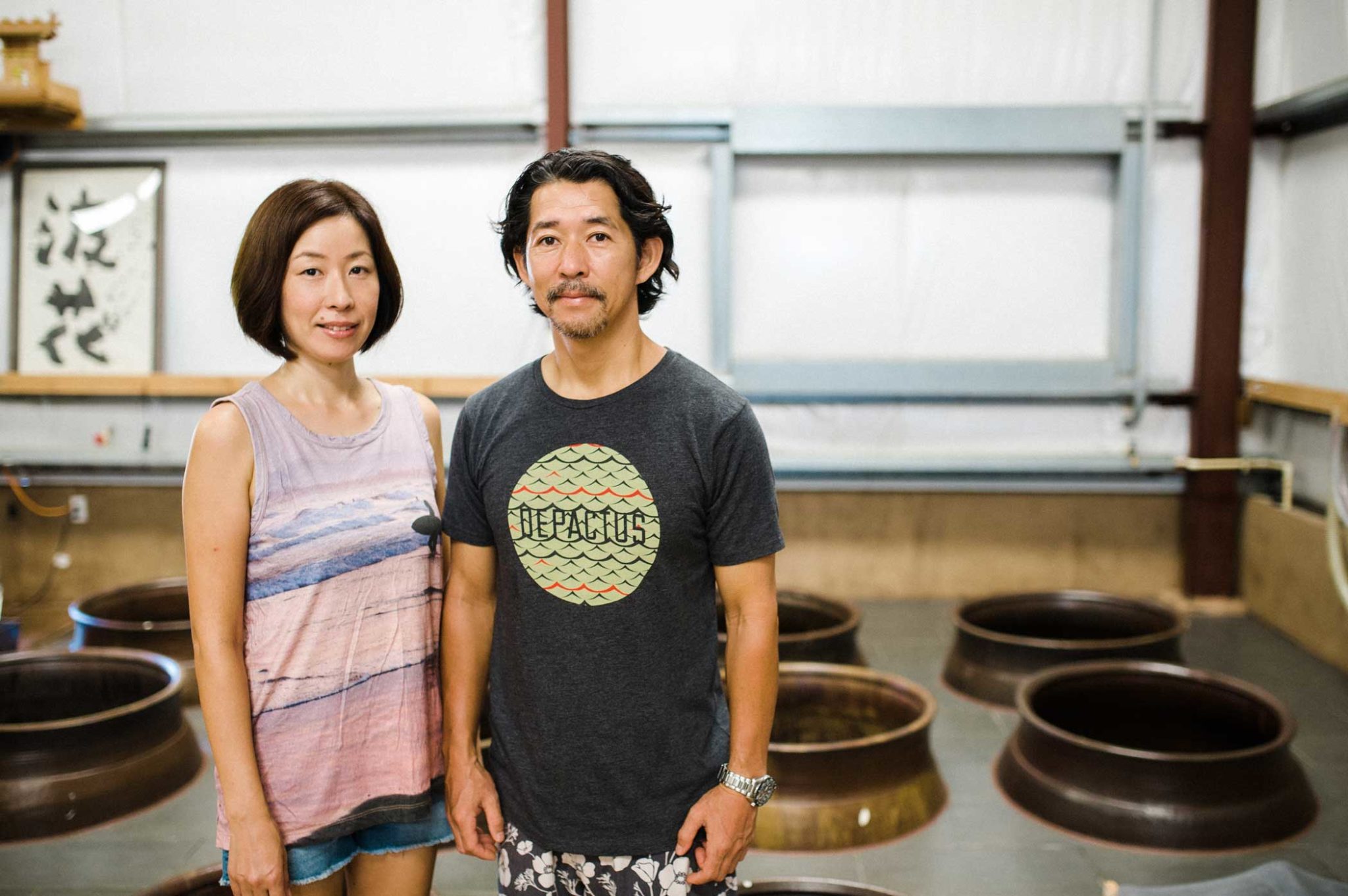Learn how a light-hearted business idea while on vacation in Hawaii became a lifestyle for Hawaiian Shochu Company founder Ken Hirata.
Images by John Hook
It all began with a joke. Twenty-five years ago, on a vacation to Hawai‘i, Ken Hirata tasted slightly fermented poi, and quipped to his friends that he could make shochu out of the sticky purple mixture. It was a funny thing to say for a product developer in Osaka with no previous experience making the Japanese spirit.
And yet, a decade later, the idea again seized him. Hirata has no explanation as to how or why, just a simple notion: “I thought it would be fun if I could make shochu in Hawai‘i.”
The joke became a quest. He begged Toshihiro Manzen, a shochu master whom he admired, to take him on as an apprentice.
It was like a kung fu movie, Ken remembers. First he wrote a letter; then he started showing up at Manzen’s distillery in Kagoshima, Japan. Manzen rejected him more times than Ken can remember, until one day, Ken and his wife, Yumiko, happened upon Manzen in a small bar.
“We started talking about many things,” Ken says. “And then he finally accepted me. Maybe he was drunk.” While apprenticeships usually last 10 to 15 years, Ken explains, he was nearly 40 years old when he began his, and after three years, Manzen said that if Ken didn’t make his own shochu soon, he would be too old to start.

We don’t want to do any disrespectful thing to Hawaiian culture.
It took Ken five years to open his Hawai‘i distillery—a simple structure he and Yumiko built down a dirt road in Hale‘iwa—and to produce his first bottle of shochu under the Hawaiian Shochu Company label. But he didn’t make his first batch as he originally envisioned.
“We went to talk to some Hawaiian groups, and asked them permission if we could use taro to make shochu,” Ken says. “Unfortunately, they all disapproved of us using taro to make an alcoholic beverage. We don’t want to do any disrespectful thing to Hawaiian culture.”
Instead, Ken turned to Hawai‘i’s sweet potatoes, which have a starchy, dry flesh ideal for making shochu.
His current batch is called Three Islands, after the trio of islands from which his sweet potatoes were sourced: Big Island, O‘ahu, and Moloka‘i. Ken’s shochu emerges as clear as vodka, but with a subtler, smoother, slightly sweet finish. It’s about 30 percent alcohol, somewhere between sake and whiskey in proof.
When thinking of Japan, most people think of sake. But it is actually shochu—which can be made from rice, barley, or sweet potato that is fermented and then distilled, unlike sake, which is only fermented—that is the more popular drink there.
Most shochu made in Japan, however, is mass-produced in stainless steel tanks, and its fermentation, which takes place in air-conditioned rooms, is controlled by computerized monitoring systems. Ken wanted to learn from Manzen because “he tries to work with the nature, not to try to control the nature.”
Ken follows the same principles and techniques of his master. During the two-month production cycle in Hawai‘i, Ken and Yumiko tend to each step of the shochu-making process.
They sleep on a wooden platform above the koji room, and get up every three or fours throughout the night to check on the koji—the cultured mold responsible for turning starches into sugar, kick-starting the shochu-making process—which is cultivated by mixing it with steamed rice.
Next, they add the koji rice to mashed sweet potatoes, fermented in 100-year-old ceramic vats that have been passed down through generations of Manzen’s family. Throughout the fermentation process, Ken and Yumiko monitor temperature and humidity, until the mash is ready to be distilled into large wooden barrels, where it ages for up to six months.

Ken calls his production a “micro micro-distillery,” as it produces only 3,000 bottles every six months. He and his wife do everything themselves, from production to selling bottles directly from the warehouse, where they work, sleep, eat, and live.
In addition to waking up throughout the night to check on the koji, Ken and Yumiko work continuously from 5 a.m. to 5 p.m., performing tasks such as washing or steaming rice, chopping sweet potatoes, making the mash, distilling. “And the majority of the time, I’m cleaning,” Ken says. “I’m like a janitor—sanitizing, cleaning. Contamination is the worst thing that can happen.”
Of the minutiae of shochu making, Ken says: “They are small things.” But they all matter. Shochu making is no longer a joke; it is now Ken’s life. He says of the entire process, “I feel like it will enrich my life in the end.”
For more information on Hawaiian Shochu Company, find it on Facebook.
This story is part of our The Good Life Issue.

